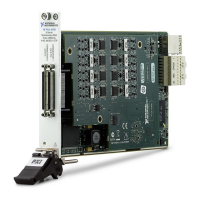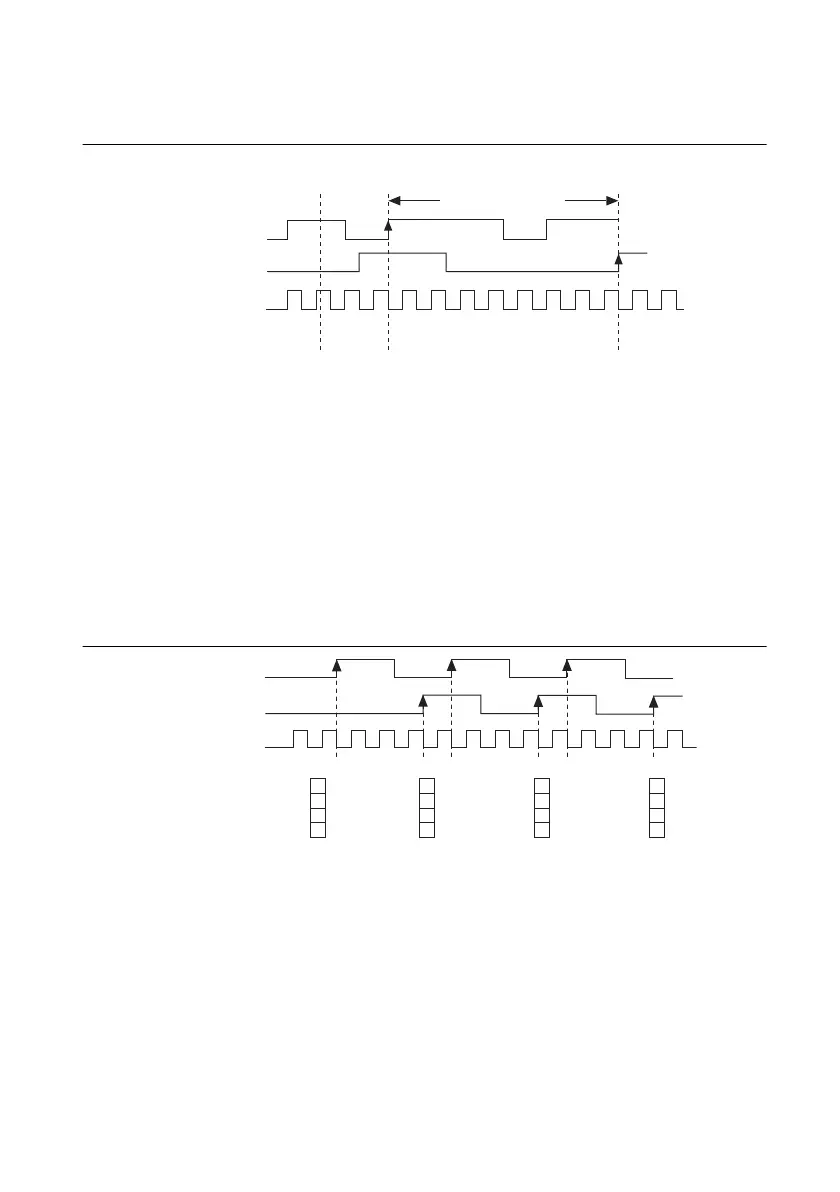© National Instruments | 7-25
X Series User Manual
Figure 7-24 shows an example of a single two-signal edge-separation measurement.
Figure 7-24. Single Two-Signal Edge-Separation Measurement
Implicit Buffered Two-Signal Edge-Separation Measurement
Implicit buffered and single two-signal edge-separation measurements are similar, but implicit
buffered measurement measures multiple intervals.
The counter counts the number of rising (or falling) edges on the Source input occurring between
an active edge of the Gate signal and an active edge of the Aux signal. The counter then stores
the count in the FIFO. On the next active edge of the Gate signal, the counter begins another
measurement. A DMA controller transfers the stored values to host memory.
Figure 7-25 shows an example of an implicit buffered two-signal edge-separation measurement.
Figure 7-25. Implicit Buffered Two-Signal Edge-Separation Measurement
Sample Clocked Buffered Two-Signal Separation Measurement
A sample clocked buffered two-signal separation measurement is similar to single two-signal
separation measurement, but buffered two-signal separation measurement takes measurements
over multiple intervals correlated to a sample clock. The counter counts the number of rising (or
falling) edges on the Source input occurring between an active edge of the Gate signal and an
active edge of the Aux signal. The counter then stores the count in the FIFO on a sample clock
edge. On the next active edge of the Gate signal, the counter begins another measurement. A
DMA controller transfers the stored values to host memory.
AUX
Counter
Armed
8
0000123 456788 8
Measured Interval
GATE
SOURCE
Counter Value
Latched Value
SOURCE
Counter Value
Buffer
AUX
GATE
123 123 123
3 3
3
3
3
3

